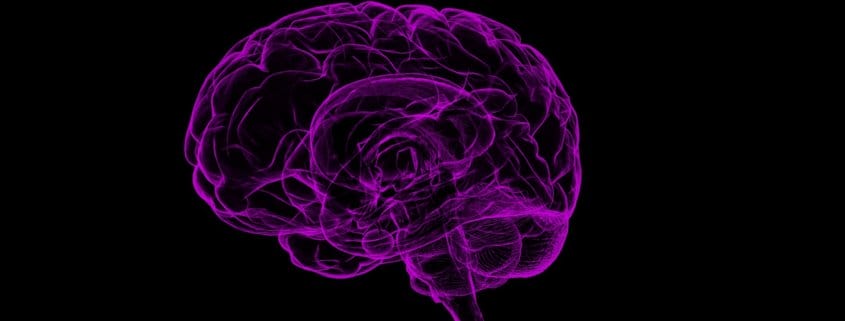Brain Science
Brain science (neuroscience) involves the physical structure of the brain, its biochemistry, and experiences that help shape it. A brain repeatedly subjected to trauma (physical or emotional/chemical) is more likely to suffer some difficulty. Some, but not all, of the major players of brain function are:
Brain chemistry
Neurotransmitters
Neurotransmitters are chemicals in the brain that transmit information from one neuron to another across a gap called a “synapse.” Common neurotransmitters are serotonin, dopamine, norepinephrine, and glutamate. Well over 100 have been identified, and all of them play various roles in our daily lives. Many anti-depressant medications act on neurotransmitters like serotonin, dopamine, and norepinephrine.
Serotonin
Directly associated with feelings of happiness and well-being, serotonin is probably the most well-known neurotransmitter. It is found in the gastrointestinal tract, blood platelets, and the central nervous system. SSRI medications are Selective Serotonin Re-uptake Inhibitors, which means it helps more serotonin stay in the systems where it is found.
Dopamine
Produced in the brain and kidneys, dopamine is involved in reward-motivated behavior. Some illicit drugs are craved because of their pleasurable effect resulting from the production of dopamine (pleasure’s purpose is to reward us, which encourages the behavior that stimulated its production). This is often thought to be the reason illicit drugs are called “dope.” Because of the artificial stimulation of dopamine, we trick our brains into thinking that we should have more of that behavior (use of the drug).
Norepinephrine
Often called noradrenaline, norepinephrine mobilizes the body for action. In the brain, it is involved in arousal and alertness, promotes vigilance, helps in the formation and retrieval of memories, and focuses attention. It is also directly related to increased alertness in the form of anxiety and restlessness (consider these impacts in relation to mobilizing the body for action).
Glutamate
Oddly, glutamate is one of the least known neurotransmitters but is by far the most abundant neurotransmitter, interacting with around 90% of the synapses in the brain. It is used in all excitatory information-transmitting pathways in vertebrates. It has a powerful role in the plasticity of the brain, or the brain’s ability to rewire itself, and is therefore strongly associated with learning and cognition.
Neuropeptides
These are little strings of proteins that the neurons in your brain use to communicate with each other. They are influenced by genetics and your experience of life. For example, repeated emotionally painful experiences cause the production of neuropeptides associated with emotional pain; therefore, interpreting life with pain-prone neuropeptides could be challenging, whereas seeing life with resilient neuropeptides could help.
As you collect more experiences, these neuropeptides continue to form and flood the brain with their ‘flavor’ (ie painful, negative, cheerful, optimistic, etc) and this can shape your experience of life. When we spend years amassing healthy neuropeptides, our brain is set to recreate the conditions that led to the production of those same neuropeptides . . . more healthy behaviors and thoughts. The challenge can be the reverse: when we amass ‘unhealthy’ neuropeptides, our brain seems to repeat behaviors that lead to the negative experience, and the resulting neuropeptide; this is one contributing factor to things like the abused becoming an abuser, a victim perpetuating victimhood, and the successful recreating success. It seems that the brain seeks to match the external world with the internal expectation set by neuropeptides.
Neuropeptides also have profound impacts on the biological functioning of the body and mind including:
- Food intake
- Pain relief
- Sexual behaviors
- Metabolism
- Socialization
- Learning & memory
Neuromodulators
A neuromodulator is released by neurons in the central or peripheral nervous system to regulate other neurons. They have a wide variety of functions, but in general, can be seen to increase or decrease the action of neurotransmitters. They also modulate the action of neurotransmitters by altering the amount synthesized.
Neurohormones
Like the other brain chemicals, neurohormones impact how our brain and body work together. Neurohormones, however, are released into the bloodstream. The “orgasm” chemical oxycontin is an example of a neurohypophysial hormone. As a medication, it is used to help stimulate childbirth.
Brain Structures
We know that different areas of the brain control different parts of your body, and different parts of your personality, etc. Many of these structures can take over functioning if another part of the brain is damaged. Current research is revealing the neuroplasticity (the ability of the brain to rewire, and even generate new neurons [neurogenesis]) of the brain is an incredible adaptation that allows us to evolve.
There are 2 hemispheres of the brain: left and right. Just as the left hemisphere controls the right side of the body, and the right hemisphere controls the left side (bilateral communication), each hemisphere is also responsible for different thought processes and modes of functioning.
Right Hemisphere
Controls the motor function of the left side of the body. Creativity; visual-spatial skills. People with depression and a right-dominant brain tend to be a bit more pessimistic about their treatment, so a counselor or therapist should know how to deal with this.
Left Hemisphere
Controls motor function in the right side of the body. The logical interpretation of information; math; abstract reasoning. People with depression that are left-brain-dominant tend to be more optimistic and motivated to deal with depression and overcome it; clearly, therapists and counselors should know how to take advantage of this momentum.
Corpus Collusom
The 2 hemispheres are able to coordinate using the corpus callosum, a tissue that alternates between the hemispheres, carrying complex details about brain function from one hemisphere to the other.
Basal Ganglia
The basal ganglia is involved in motor control, learning and emotion. Conditions related to the basal ganglia are Parkinson’s disease, Huntington’s disease, ADHD, Obsessional-Compulsive disorder, among others.
Amygdala
The Amygdala plays a significant role in the processing and memory of emotional reactions, including the startle reflex. A section of the amygdala is considered to be a part of the basal ganglia (see above). Emotional Memory is partially influenced by this survival structure of the brain. Conditions related to the amygdala include Borderline Personality, Bipolar depression, Social Phobia, and possibly Schizophrenia.
Generally speaking, if somebody is raised in a dangerous or otherwise stressful environment, the amygdala may become perpetually overstimulated, and learn to remain in this heightened state, leading to the relative anxiety one would see in the above conditions. It is as if somebody with a hyperactive amygdala is always on their guard–ready for something to go wrong; tie this in with the effects of neuropeptides, and you can see how quickly we can feel ‘stuck’ in frustrating situations.
Hippocampus
The hippocampus is involved in long-term memory, spatial navigation, episodic memory, and several other very important daily living functions.
It is understood to be one of the first parts of the brain to malfunction in Alzheimer’s disease. Damage to this region of the brain is also connected with difficulties in long-term memory formation, and even episodic short-term memory formation.
Hypothalamus
The hypothalamus, like so many other parts of the brain, is involved in a variety of functions, ranging from connecting the nervous system to the endocrine system (the system that uses hormones to regulate mood, metabolism, etc) by way of the pituitary gland.The hypothalamus controls body temperature, fatigue, circadian cycles (sleep patterns), and is also involved in survival urges like hunger and thirst.
Anterior Cingulate Gyrus (ACG)
Sometimes called the “gear shifter of the brain.” It is part of the executive function network in the brain.
The ACG helps control cooperation, mental flexibility, and attention. It also helps the brain transition between arousal and mental activities (thus, the “gear shifter”).
Trauma to the brain
When part of the brain is injured through concussion (as in football or boxing) or through chemicals (like drinking and drugs), the change that occurs depends on the part of the brain that is impacted. Massive personality changes have been well-documented for many years.
Nutrition and hydration
What you feed yourself is what you are feeding your brain. The better the food, the better the brain power. Since electricity is transmitted by water in the brain, the more hydrated you are, the better your brain will be able to send these electric impulses around efficiently.
Learn more about Counseling in Austin.
Jonathan F. Anderson, LPC-s has worked in the helping profession since he started college in 1990. After completing his Bachelor’s degree at the University of Texas, Austin in 1994, he attended the highly-regarded University of Minnesota to earn his Master’s degree in 1997. He is a Licensed Professional Counselor and is recognized as a Board Approved Supervisor by the State of Texas Board of Examiners of Professional Counselors. Jonathan has completed Level-2 of the Gottman Method of Couples Counseling, and in 1998 received training by the International Critical Incident Stress Foundation in Advanced Critical Incident Stress Management & Debriefing. To learn more about Jonathan’s practice, click here: Jonathan F. Anderson, LPC-s.



